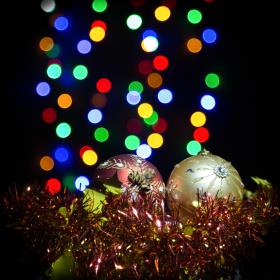
What is Bokeh?
Bokeh makes photographs visually appealing, and the word comes from Japanese language, which literally translates as “blur”.
Bokeh is essentially the quality of the out-of-focus or “blurry” parts of the image rendered by a camera lens – it is NOT the blur itself or the amount of blur in the foreground or the background of a subject. The quality and feel of the background/foreground blur and reflected points of light, however, is what is known as Bokeh.
Generally, portrait and telephoto lenses with large maximum apertures yield more pleasant-looking bokeh than cheaper consumer zoom lenses – all due to differences in optical designs of both lenses. Many new lenses now come with 9 rounded diaphragm blades, which render a more rounded bokeh.
How to get good Bokeh
Bokeh depends on the type of lens you are using.
To try out bokeh:
Place your camera on a tripod, focus on an object from a very close distance (as close as the lens will allow, keeping the object in focus), make sure there are no objects at least 5-6 feet behind it.
Also, make sure to be on the same level as the object itself, so that you are not looking down on it. Find a colourful background (not a plain wall), Christmas tree lights are a perfect background for a bokeh test. Place your foreground subject close to the camera (you may need additional light on this) and set your camera to ‘Aperture Priority’ mode with the aperture at the smallest number; f2.8 – f4? Take a picture of your subject and look at image on the rear LCD screen of your camera. Foreground subject should be in focus and correctly exposed, while the background is blurred. With better lenses the circular reflections should be rounded and soft, with a minimum of hard edges.
I do offer feedback on photos so please try the ‘Photo Evaluation’ section to have your image(s) judged and receive constructive feedback 🙂
Please contact me for more details on improving your photography results and skills, either on a photo course or with one-on-one tuition, or see my web site for more details – thank you.